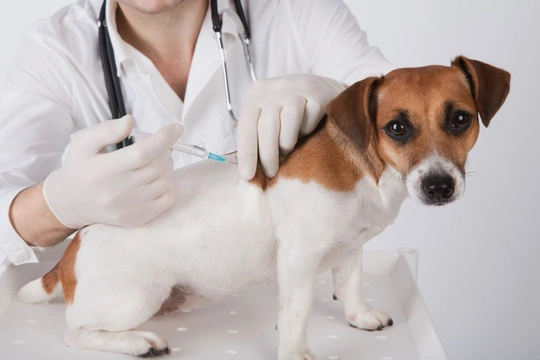
How long does the Parvovirus remain in the environment?
Parvo or Parvovirus is a highly contagious canine condition that spreads very quickly among dogs that have not been vaccinated against it, and which is fatal in young puppies in up to 80% of cases. Parvo can be dangerous for adult dogs too, but generally, adult dogs both have a stronger immune system than their younger counterparts, and also, have benefitted from vaccinations and ongoing annual boosters against the condition.
Puppies are particularly susceptible to the condition because their immune systems are not fully developed, and this is one of the main reasons why puppies that have not yet been vaccinated and received the go-ahead from the vet should not come into contact with strange dogs, or be taken outside of the home and immediate garden.
One of the main problems with the Parvovirus and why it is such a risk for puppies and unvaccinated dogs is that the virus itself is very hardy, and your dog or puppy does not even need to come into direct contact with an infected dog to develop the condition; Parvovirus can also be spread through contact with infected bedding and food bowls, and even contact with ground that an infected dog has walked over or toileted on.
Parvo is very hardy, and can remain active and ready to infect more dogs for a significant amount of time after the dog that first suffered with it has either recovered or passed away, and so it is a good idea for all dog owners to gain a basic understanding of Parvovirus and how it spreads in the environment, how long it can remain active for without a host, and steps that can be taken to eradicate it.
We will look at these factors in more detail within this article.
How does Parvovirus enter the environment?
A dog or puppy infected with Parvovirus sheds the virus in their faeces, which begins about five days after they are first exposed to the virus and before they even begin to show signs of illness. The viral load shed in the stools is very high, and infected dogs will shed them for anything between 3-6 weeks after infection. Even after the time when a dog stops actively shedding the virus in their stools, the virus can remain active in the environment for much longer.
Parvo is very hardy, and resistant to the usual temperature changes that generally help to eradicate viruses. Hot weather does nothing to kill Parvo, and even sub-freezing temperatures do not terminate the virus, instead, rendering it inactive in the soil until the weather improves. This goes for both the environment outdoors, and also in your home.
How long does Parvo live without a host?
Not only is the Parvovirus very hardy, it also lives a very long life for a virus, and can remain within the soil once infected for anything between six months to one year after exposure. This of course has implications for people who have owned a dog that had Parvo, when it comes to getting a new dog or puppy, or having canine guests over.
Within the indoor home environment, Parvovirus has a shorter lifespan, but still, you are looking at upwards of two months.
What kills Parvo?
The only sure-fire way to make sure that your home and garden environment is safe after an infection with Parvo is to wait a significant amount of time for the virus to die off before another dog comes into contact with the land or home, which may mean waiting for upwards of a year.
You can kill the Parvo virus on things like bowls and bedding by soaking them for 30 minutes in a bleach solution, but this can of course ruin soft furnishings, and so the best option is often simply replacing them.
It is impossible to eradicate Parvo from the outdoors environment, but you may be able to dilute and reduce the viral load in your garden, albeit at the expense of your lawn and plants, by hosing the garden down repeatedly with a disinfectant solution. However, even then, this provides no guarantees.
Playing safe
In order to do everything possible to avoid infecting another dog with Parvo once it has become present in your home and garden, there is only one safe way to proceed. Make sure that your next dog has undergone their full initial vaccination cycle before you bring them home, including the waiting period after vaccination to allow the vaccine to take full effect. This rule should also be applied to canine visitors; ensure that any dogs that come over are fully vaccinated as well.
This is the only way to make sure that the Parvovirus does not get passed on to one or more dogs in the first year after Parvo makes its way into your environment, after which time your home and garden should be clear of the virus.



